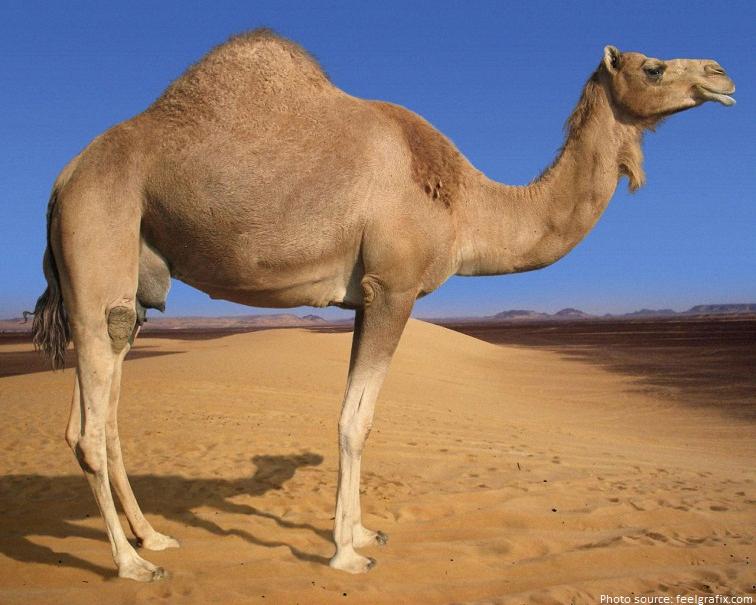Camels are fascinating animals that have adapted to live in some of the harshest environments on earth. They are known for their ability to store water and survive for long periods without food or water. One of the most distinctive features of camels is their height, which varies depending on the species.
There are two species of camels: Bactrian and dromedary. The Bactrian camel is a two-humped camel that is found in central Asia, while the dromedary camel is a one-humped camel that is found in the Middle East, North Africa, and parts of Asia. Both species have different heights and weights.
The Bactrian camel is the larger of the two species, with a shoulder height of 6 feet (1.8 meters) and a body length of 10 feet (3 m). They norally weigh 1,320 to 2,200 lbs. (600 to 1,000 kg) when they are fully grown. This camel has two humps that store fat and water, which helps them to survive in the harsh desert climates where they live.
On the other hand, the dromedary camel is smaller than the Bactrian camel, with a shoulder height of about 6.5 feet (2 m) and a weight of 880 to 1,325 lbs. This camel has only one hump that stores fat and water, which helps them to survive in the desert where food and water are scarce.
It is interesting to note that camels are much larger than horses. On average, they stand around six and a half feet at their hump and weigh roughly 1,500 lbs. In contrast, the average horse is about 5 feet tall and weighs 900 lbs. However, horses are faster than camels over short distances but require more care and feeding.
There is also evidence of extinct species of camels that were much larger than the modern-day species. For example, a Megatylopus camel fossil, which is thought to be around 7 million years old and 4 meters (14 feet) tall, was discovered in the United States. This particular specimen is estimated to have weighed around 1698 kg (3700 lbs).
Camels are fascinating animals that have adapted to survive in some of the most extreme conditions on earth. Their height and weight vary depending on the species, with the Bactrian camel being the larger of the two species. Despite their size, camels are well-suited to their environment and play an important role in many cultures around the world.
Average Height of Fully Grown Camels
A fully grown camel can reach varying heights depending on the species. The Bactrian camel, also known as the two-humped camel, can stand at a shoulder height of 5.2 to 5.9 feet and can measure up to 10 to 11.5 feet in length. On the other hand, the dromedary camel, also called the one-humped camel, can grow up to 5.9 to 6.6 feet tall at the shoulder and can measure from 7.2 to 11.2 feet in length. It is important to note that the height and length of camels can also vary based on their diet, genetics, and living conditions.

Source: justfunfacts.com
The Size of the Largest Camel
The largest known camel species to have roamed the earth was the Megatylopus camel. It is estimated to have lived aroud 7 million years ago and stood at a height of approximately 4 meters (14 feet). According to a study conducted by Mendoza and his team, these camels weighed around 1698 kg (3700 lbs), making them one of the heaviest land animals of their time.
The fossil of Megatylopus camel took two months to excavate and is a significant find in paleontology. This prehistoric species is believed to have been herbivorous and lived in North America during the Miocene Epoch.
To put the size of Megatylopus camel into perspective, here are some additional details:
– They were taller than modern-day camels, which typically stand between 1.8 to 2.1 meters (6 to 7 feet) tall.
– Megatylopus camels were also heavier than most modern-day land animals, including elephants and rhinos.
– Their long legs and necks would have allowed them to reach high branches and leaves for food.
The largest camel species to have existed was the Megatylopus camel, which stood at 4 meters (14 feet) tall and weighed approximately 1698 kg (3700 lbs). This prehistoric herbivore roamed North America during the Miocene Epoch, and its fossil remains are a significant discovery in the field of paleontology.
Comparing the Heights of Camels and Horses
Camels are taller than horses on average. While horses typically stand around 5 feet tall, camels can reach up to 6 and a half feet at teir hump. This height difference is due to the unique physical structure of camels, with their long necks and distinctive humps. In addition to their height, camels are also much heavier than horses, weighing in at around 1,500 lbs on average, compared to the average weight of a horse at 900 lbs. It’s important to note, however, that horses are typically faster than camels over short distances but require more care and feeding. while both camels and horses have their own unique strengths and characteristics, it’s clear that camels are indeed taller than horses.
Does a Camel Have Five Feet?
A camel does not have five feet. Camels are knwn for their unique physical characteristics, including their humps, long necks, and broad feet. However, they only have four feet, like most mammals.
Camels are classified into two types: Bactrian camels and dromedary camels. Both types of camels have four feet, which are specially adapted for their desert environments. Their feet are wide and cushioned, allowing them to walk on sand without sinking.
It’s worth noting that camel feet are different from those of other animals. Each foot has two large toes with a thick, leathery pad of skin underneath. These pads help distribute the camel’s weight and provide traction on sandy terrain. Additionally, camels can close their nostrils to keep sand out while they walk.
A camel has four feet, not five. Their feet are uniquely adapted to help them navigate sandy environments, with two large toes and thick pads of skin.

Conclusion
Camels are fascinating animals that come in different shapes and sizes. Bactrian camels, known for their two humps, can grow up to 6 feet tall at the shoulder and have a body length of 10 feet. They can weigh anywhere from 1,320 to 2,200 pounds when fully grown. On the oter hand, dromedary camels, also known as Arabian camels, can reach up to 6.5 feet at the shoulder and weigh between 880 and 1,325 pounds. Megatylopus camels, a prehistoric species, were even taller, measuring up to 14 feet in height. camels are impressive creatures that have adapted to survive in harsh environments, and their height is just one of many interesting features.
